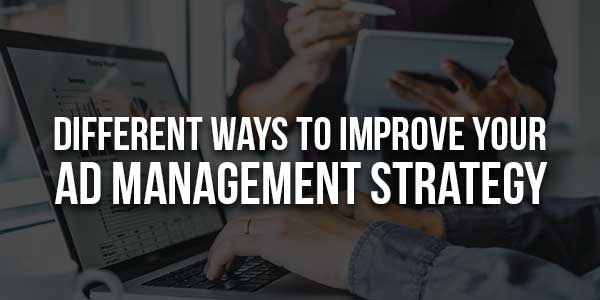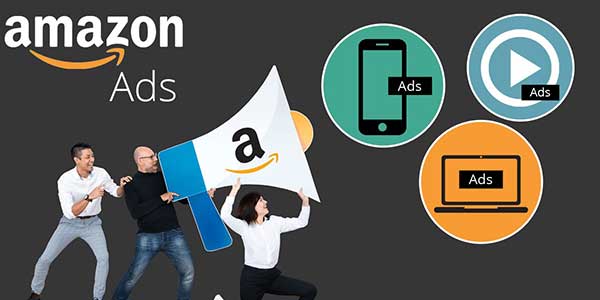
If you are a small business owner looking to make a mark in the eCommerce space, then Amazon will likely be your platform of choice. It draws the biggest share of the industry’s traffic and contains many features that make the user and seller experience on the platform memorable. Such a support system is a double-edged sword for sellers-it helps sellers perform better, which attracts more sellers to the platform, increasing competition. Worldwide, in 2022, the number of sellers on Amazon could cross 9.5 million.
You can get through this high competition by using Amazon PPC Management Services to run effective ad campaigns for your products and promote them to a wide target market. A is the proven way to promote your products on the platform in the short term.
Read on to learn more about PPC and the best ways to implement it for low Advertising Cost of Sale (ACoS) and high Returns on Ad Spend (RoAS).
Table of Contents
Amazon PPC: What It Is, Why It’s Necessary, And Its Types
What Is PPC On Amazon?
Pay-per-Click, as the name suggests, is a paid marketing method where you pay the advertiser a certain sum of money for every click your ad gets. It is the most popular type of paid marketing in the digital world, especially in the eCommerce space. Amazon realized this potential early on and let third-party sellers and vendors on its marketplace advertise their products via clickable ads.
You, as a seller on Amazon, can access this ad facility through a bidding process. There are a few other conditions you need to meet to become eligible to bid too. Unlike other bid processes where the highest bid amount is what the auctioning agent/agency collects, Amazon only makes the highest bidder eligible for an ad spot or keyword they bid for. The amount you will pay is $0.1 more than the next highest bid. This helps keep the advertising costs low for sellers.
Why Is It Necessary?
The following are the reasons Amazon PPC is popular:
● Organic Marketing/SEO Is Slow:
It takes time for your SEO efforts on Amazon to start giving you returns on your investment. Thus it works well as a long-term marketing effort but fails when it comes to the short term. PPC is tailor-made for short-term marketing efforts. It helps new sellers establish their brand on the platform quickly.
● Large Advertising Horizon:
With PPC, you can advertise not just on Amazon but also on search engine results pages like Google and social media sites like Facebook. This expands your brand visibility range as you can target a wide audience base.
● Customers Need Quick Results:
Online shoppers are not looking to browse casually like window shoppers. They want to get to their desired product page quickly and buy it. PPC ads provide a highway to them by bringing them directly to the landing page they want i.e., their desired product page.
● It Increases Traffic and Brand Value Quickly:
The sooner your potential customers see your ads, the more likely they will visit your product pages and convert. This is especially useful for new sellers to establish themselves on the platform.
Types Of Amazon PPC Ads:
You can make use of the following ad types on Amazon according to your needs:
● Sponsored Products:
These appear in search results whenever users query the platform for a particular keyword or keyphrase related to their intended purchase. They advertise a single product and are also present below the fold on product pages. You can use them to learn which keyword increased which product’s sales via product and keyword-level reports.
● Sponsored Brands:
These appear within shopping results in prominent places and on product pages. They are ads that you can customize to showcase your brand logo, insert a custom headline, and multiple products. They are meant to drive brand discovery among customers who are shopping for products similar to your offerings. The algorithm here targets keywords, categories, and products. Sellers and vendors need to be enrolled in Amazon Brand Registry to be eligible for this.
● Sponsored Display:
Sponsored display ads are self-service ads that are meant to engage shoppers on and off the Amazon Marketplace platform. They are customizable and are centred around your target audience’s interests. These ads can be set to automatically generate and update upon making a product listing live. They are purchased on a CPC basis or cost-per-1000 viewable impressions basis. The aim is to drive brand awareness and engagement across media using a variety of ad types.
● Amazon DSP:
It is a demand-side ad platform by Amazon that enables you to use programs to purchase ads both on and off Amazon to reach new and existing customers. An Amazon DSP ad can take multiple forms, but the goal is to lure customers from other platforms to Amazon and convert. This facility is open to vendors and sellers of all kinds. You get advanced features like geography, demographic, device, and schedule-based targeting, among others.

Ways To Improve Your Ad Management Strategy:
An ad campaign will produce the intended results only if it is backed by a well-thought-out strategy. Developing such a strategy is a difficult task since there are multiple factors to consider, like budget, timing, audience behaviour, etc. Partnering with an Amazon PPC Management Services provider and incorporating the proven ad management tips explained below will give you a profitable ad campaign strategy with low ACoS and High ROI that also helps increase your brand’s visibility and reputation.
1.) Use Keywords To Work Your Way Up:
Long-tail keywords are the ideal place to start your PPC journey, regardless of whether you are a new seller on Amazon or introducing a new product. You should only advance and target the general, most-searched keywords once you have achieved a certain level of skill and success with these long-tail keywords.
This PPC strategy succeeds because if you begin by focusing on the most popular search terms, which typically have high competition and CPC, you’ll wind up spending a great deal of money. Your brand won’t even gain any visibility, let alone traffic or sales.
Even if your listings receive ad impressions, there is little chance that they will result in sales because your rivals are far more prominent and well-known in the market for those general keywords.
The strategy is very straightforward: start by going after long-tail keywords because they will be easier to rank for. Work with your Amazon description services provider to incorporate them in your product description and title strategically. You’ll notice that you can easily close deals and build your sales history with low competition and strong purchase intent. Once customers become more familiar with your brand and its products start to rank higher in the Amazon Search results, you might concentrate on the keywords at the next level and advance from there.
2.) Include Indirect/Alternative Keywords:
Customers don’t always know the specific product they need but will search for a solution that the product offers. You can capture the attention of such visitors by highlighting the benefits of the product in its description. One of the best ways to accomplish it is to include indirect or alternative keywords and target them via Amazon Sponsored Products ads.
To obtain these keywords, you should alter your keyword research approach. Account for the pain point that the customer is trying to solve and search for keywords related to those terms. For example, if someone is looking for weight loss solutions, you could include keywords related to dieting books, health supplements, home gym products, etc. Also, analyzing your competition’s top listings will give you an idea of what you can incorporate in your ads to improve their effectiveness.
Making this a part of your ad strategy opens up your market horizons to new segments while expanding your brand name. It increases customer trust and cements your brand reputation further, thereby pushing up the value proposition of your ad campaigns. Make sure you run these in tandem with your regular campaigns and not replace them. Keep a tab on their performance and regularly revise for efficiency gains.
3.) Alter Your Bids According To Ad Placements:
Amazon has unveiled several enhancements that improve how vendors compete in PPC auctions. This PPC tactic results from those enhancements and gives more control over where you want your advertisements to show and how much you are ready to pay for them. It allows you to optimize your campaigns much more skillfully.
The major focus of this tactic is placement-based bid adjustment. Your ads can be found in one of the three locations:
- Top of page one of search results,
- The remainder of the search results (middle, bottom, and on the second page of Amazon SERP and beyond)
- On the product information page and other pages outside of search results, like the add-to-cart page.
You can examine the placement report for any campaign you run on Amazon to discover which of the three locations resulted in the most exposure and conversions. Based on this information, you can adjust each placement’s placement bidding multiplier between 0% and 900% to boost your chances of generating conversions and building brand recognition.
The ads that feature at the top of search results have the highest click-through rate. Another effective tactic would be to aggressively boost the multiplier by 100–200% and observe the results, given that ACoS is also rather low in this situation. Since the top spot on page one of the Amazon SERP is regarded as your prime real estate, this may also be successful.
There are three different types of campaign bidding techniques one could employ:
- Dynamic Bids-Down Only: If Amazon’s algorithms determine that the ad may have a decreased chance of converting, the bids will be reduced in real-time.
- Dynamic Bids – Up and Down: If the ad is more likely to result in a sale, the bids will be increased in real-time by a maximum of 100%. Similarly, the bids will drop if the ad has a lower chance of converting. Here, we need to remember two things: The bids may be increased by 100% for ads that appear first in the search results, and the multiplier is set at 50% for all other positions.
- Fixed Bids: This one goes without saying. You pay your mentioned price and don’t alter it according to a product’s propensity to get sold.
4.) Group Products With Similar Attributes/Price In The Same Campaign:
Your ACoS is bound to skyrocket if you attach each product to its individual ad campaign. The more sensible method is to combine many products having some common characteristics into a single campaign. This averages out the ad spend and improve the returns.
One of the most common and beneficial groupings is basing it on price. By placing similarly priced products in a single campaign group, you won’t let the ACoS increase from the low-performing ones affect the overall value. It helps you budget your ad spend better and plan the campaign routine more clearly. This can also be applied to product variations if there are price differences between them.
Another rewarding group that you could create specialized ad campaigns for is Category. You can use Amazon’s advanced targeting functionality to help display your products alongside the top performers of that category. You can showcase industry-related products to your customers with product attribute targeting. You can create a mix of such combinations based on trial-and-error and by analyzing the performance data of present campaigns.
5.) Let Product Performance Lead Your Ad Campaigns:
Much like different products not being created equally, their sales happen differently, too. Some of them may require more effort on your part while promoting them and more consideration on the buyer’s end, along with more clicks. In such cases, it helps to structure your ad campaigns around the product’s performance instead of its keywords.
Review your product performance charts to identify which of them are contributing more towards improving your overall ACoS. Isolate and group them in a different ad campaign from the rest. You can also go with this option for your top-performing child products if you cannot run individual campaigns for all of your variations. The advantage you gain here is that the visibility offered by the top-variant ads will also lead to increased sales of the others.
This helps reduce the ACoS of the original campaign since you will be spending less there without these products. This strategy also helps grab the attention of Amazon’s A9 algorithm while it is searching for high-performing products since it will find many top-performing products grouped in a single campaign.
6.) Adjust Ad Campaigns According To Target Audience Characteristics:
Targeted ads work very well if you know about the people you are targeting. Understanding as much as possible about your customers, such as their shopping habits, likely activities, and demographic specifics like age, height, etc., lets you assess possible needs, wants, and pain points.
You can then incorporate solutions to those in your ad campaigns with appropriate messaging. Check if your Amazon advertising services provider also offers market research services, as they are crucial to obtaining such demographic-specific information.
Two attributes that you need to account for in particular are your target audience’s preferred mode of media consumption and the time of day they are likely to be available for online shopping-related activities. A younger audience will need to be reached via social media and Amazon-based ads, whereas an older audience will require you to advertise on traditional media like newspapers and cable television channels.
You are also likely to find your younger audience available for online shopping activities during the late hours of the day, whereas the older ones and stay-at-home persons can be targeted during noon and later.
7.) Go After Products Present In Google Ads:
Google has a dedicated “Shopping” section on its search results page that displays products from various online shopping portals that it thinks are relevant to a search query. You can have your product ads there to increase your visibility beyond the confines of Amazon’s platform.
A unique advantage offered by targeting products this way on Google Ads is that you will be using the success of your competitors’ products to bolster your brand visibility. Besides Google, you could have your ads show up on Facebook, Instagram, YouTube, etc. thus, you’ll be slicing a share of your target market’s trust in your rival brand and attaching it to yours. You can stand out even better if you make your product images used in the ads more appealing by using an Amazon photo editing service provider to enhance them.
8.) Use Product Targeting Ads To Target Your Products:
Amazon has introduced a feature called Product Targeting ads that allows you to reach your customers by targeting particular products and categories they are most likely to be interested in. It is similar to Product Display ads but gives you more control over its operations. This strategy works counter to the one where you separate high-performing ASINs from the low-performing ones into separate campaigns.
The process is simple: choose the ASINs that are underperforming in terms of sales and search results and club their ads with those of the high-performing ASINs’ so that they appear next to each other. The intent is to bring traffic to the low performers by using the value proposition of the high-performers. Start small and gauge the returns generated. Increase the size once you’re certain of your performance.
You should pursue this method vehemently since it informs your customers about more products in your product range, increase retention, and help clear any stagnant inventory.
9.) Experiment With Timing, Bid Amount, and Match Types:
Timing is everything when it comes to running an ad campaign. It won’t help your sales figures if you advertise a limited-time offer event very close to or after it. Likewise, you should start advertising for a new product launch well before its launch date. There is also the availability of your target demographic to consider, as well as the variation in bidding activity on the platform.
Experiment with different times to see what works best for you. Figure out how early you need to start ad campaigns for offers and other events to draw maximum traffic without overspending. Likewise, learn when your target demographic will be most receptive to your ads during the day. Time your bids to have the best shot at getting the prime ad spots.
Speaking of bidding, use Amazon’s facility to change your bid amount to get the best possible deal for your money. Experiment with different amounts for different products and their categories to obtain a range of prices that will bring you traffic and profit without hurting your budget.
Also, experiment with keywords and match types to find out which keyword works with which type to drive the most traffic. Note the Cost-per-click amount for the automated and manual campaign options, and work toward hitting the sweet spot of high visibility and low bid amounts. Continuously monitor the ACoS, sales numbers, keyword performance, CTR, ad performance, etc., to analyze important data needed to vary the ad campaigns.
10.) Utilize New To Brand Metrics:
The Sponsored Brands ad type can give your brand great visibility across the platform and product categories. If you are registered with Amazon Brand Registry, then you should take advantage of it by creating custom ads for your headlines and product choice. They will help you understand the shopping behaviour of first-time shoppers of your brand, thus letting you optimize Sponsored Brand campaigns to increase customer count.
The new-too-brand metrics can also be used to determine the number of recurring customers to help target them with ad campaigns instead. Depending on the traffic type with the higher overall share, you can go with either Sponsored Products or Sponsored Brands. The former lets you retain your customers while the latter brings in more traffic from new ones.
Bonus) Reduce Ad Investment Waste With Negative Keywords:
Negative keywords are those keywords for which you don’t want your ads appearing. This is a thing because sometimes, your chosen keywords, especially broad ones, can display your ads to queries that are relevant to your products but unwanted by the users. This means your ad spend gets wasted on people who have no interest in converting.
For example, you can include the keyword “XXL” in your list of negative keywords for your kid’s clothing ranges so that your ads don’t appear in searches for clothing. With negative keywords, you can avoid targeting a broad market base and focus on a set of people who are most likely to convert. This will increase your RoAS and reduce your ACoS significantly due to increased conversions and give budget savings.
In Conclusion:
Running an Amazon Ad campaign that brings in high returns for low costs is a complex task that requires dedication, concentration, skill, excellent data management, and a helping of luck. The above-mentioned tips can help you develop a strategy that combines those qualities and results in your Amazon seller business’s growth and brand value enhancement.

 About the Author:
About the Author:
















Be the first to write a comment.